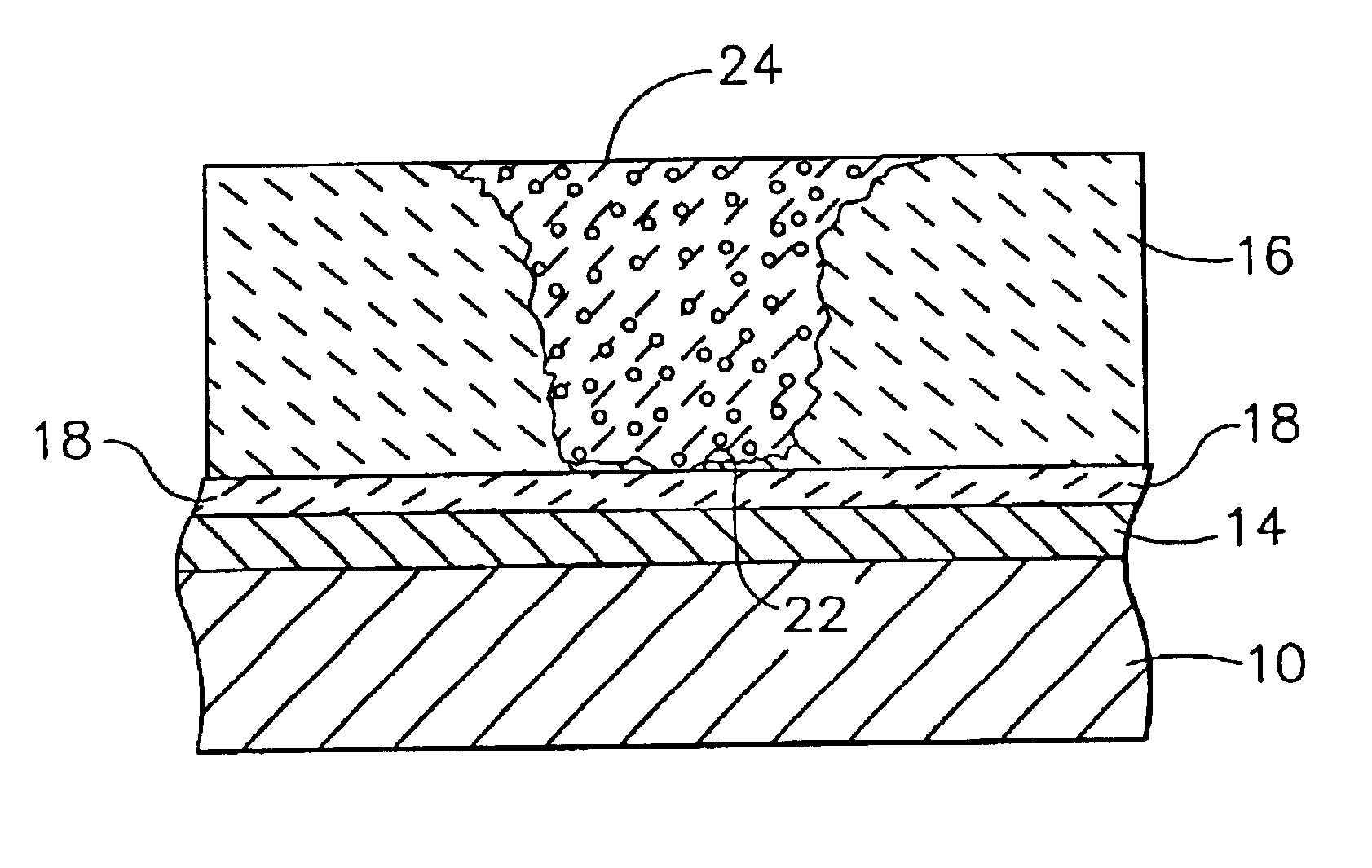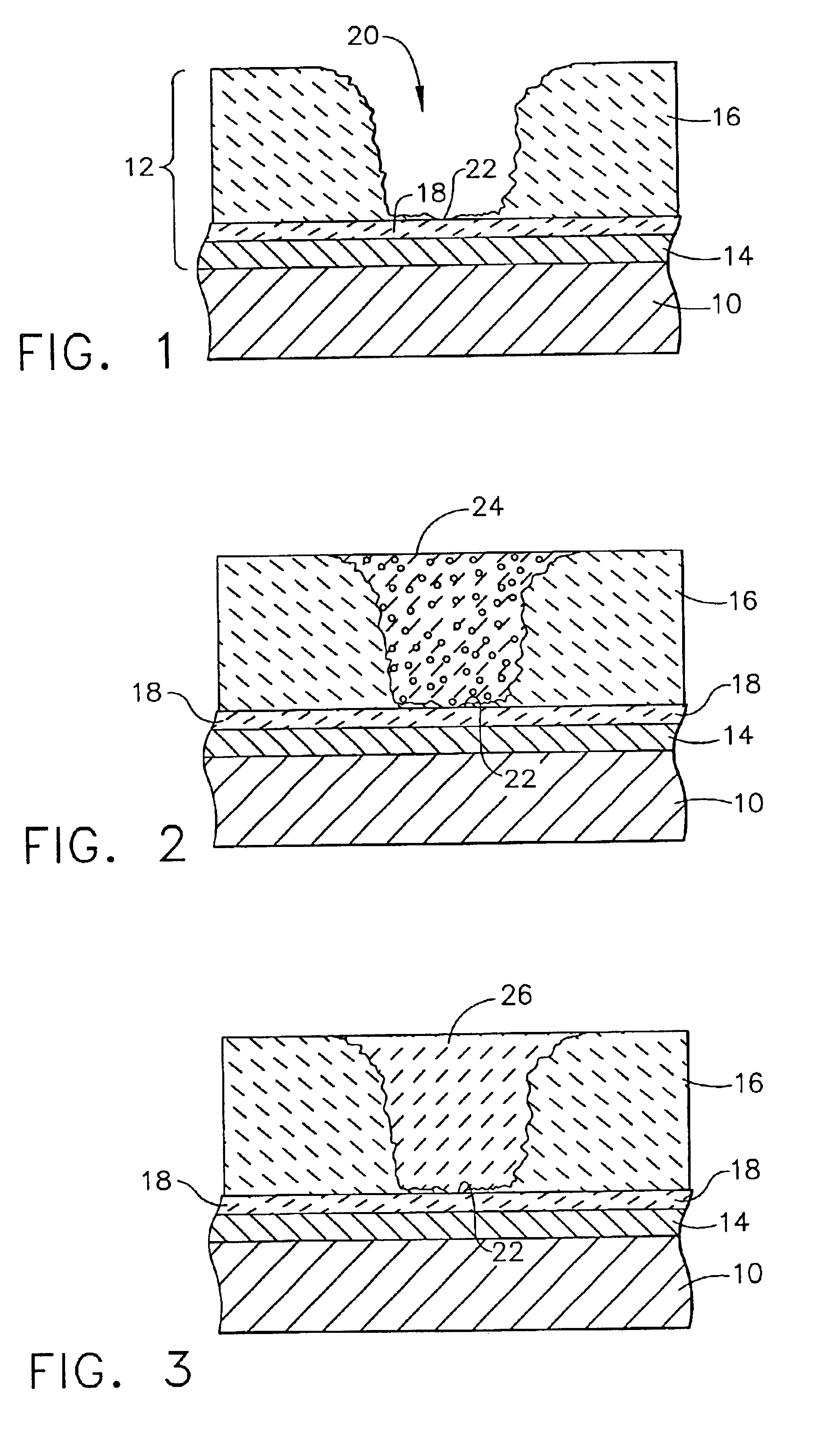Component with repaired thermal barrier coating
a technology of thermal barrier coating and components, which is applied in the direction of superimposed coating process, liquid/solution decomposition chemical coating, machines/engines, etc., can solve the problems of high temperature durability of engine components that must correspondingly increase, and are susceptible to damage, so as to achieve the effect of increasing the strength of the repair coating
- Summary
- Abstract
- Description
- Claims
- Application Information
AI Technical Summary
Benefits of technology
Problems solved by technology
Method used
Image
Examples
Embodiment Construction
[0013]The present invention is directed to components protected by thermal barrier coatings for operation within environments characterized by relatively high temperatures, and therefore subjected to severe thermal stresses and thermal cycling. Notable examples of such components include the high and low pressure turbine nozzles and blades, shrouds, combustor liners and augmentor hardware of gas turbine engines for use in aircraft and industrial applications. While the advantages of this invention are particularly applicable to components of gas turbine engines, the invention is generally applicable to any component in which a thermal barrier coating is used to thermally insulate a component from its environment.
[0014]Represented in FIG. 1 is a surface region of a component 10 protected by a thermal barrier coating (TBC) system 12. The TBC system 12 is shown as being composed of a bond coat 14 formed on the surface of the component 10, and a ceramic layer 16 deposited on the bond co...
PUM
| Property | Measurement | Unit |
|---|---|---|
| Percent by mass | aaaaa | aaaaa |
| Percent by mass | aaaaa | aaaaa |
| Percent by mass | aaaaa | aaaaa |
Abstract
Description
Claims
Application Information
 Login to View More
Login to View More - R&D
- Intellectual Property
- Life Sciences
- Materials
- Tech Scout
- Unparalleled Data Quality
- Higher Quality Content
- 60% Fewer Hallucinations
Browse by: Latest US Patents, China's latest patents, Technical Efficacy Thesaurus, Application Domain, Technology Topic, Popular Technical Reports.
© 2025 PatSnap. All rights reserved.Legal|Privacy policy|Modern Slavery Act Transparency Statement|Sitemap|About US| Contact US: help@patsnap.com


